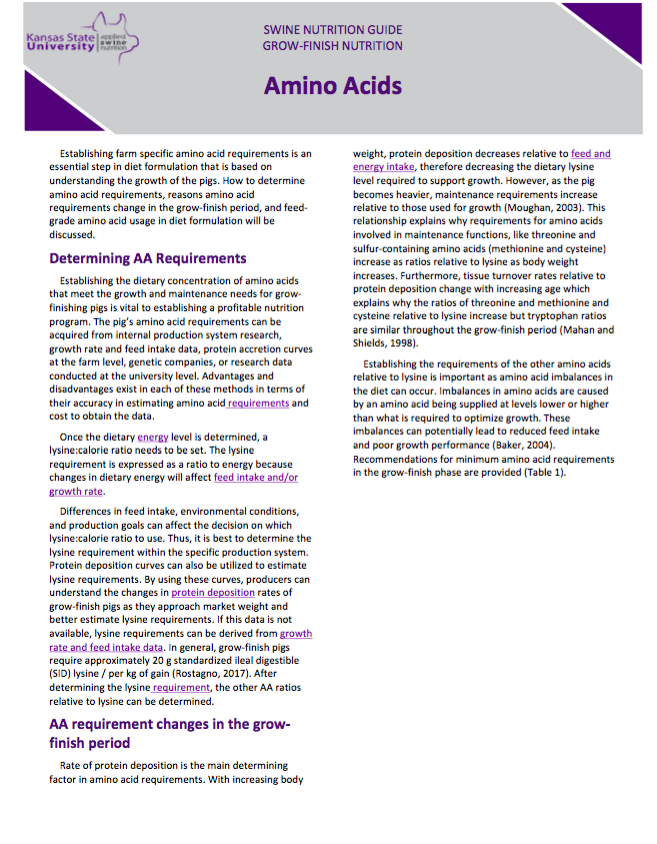Feed-Grade Amino Acids
Feed-grade amino acids have become more readily available and economical to use in diet formulation. Feed-grade lysine, methionine, threonine, tryptophan, valine, and isoleucine are currently commercially available for swine diets. Increased cost of intact proteins and increased availability of feed-grade amino acids has led producers to use more low-protein, feed grade amino acid fortified diets. Low protein diets offer the opportunity to reduce nitrogen excretion in swine waste, a benefit for the environment.
If not formulated correctly, low-protein, feed grade amino acid fortified diets can result in an overall fatter carcass compared to that of feeding a higher crude protein diet (Hinson et al., 2009; Li et al., 2016). This is the result of feed-grade amino acids replacing a lower energy ingredient (soybean meal) with a higher energy ingredient (corn) in the diet. The energy system being utilized in diet formulation should be understood when formulating with feed-grade amino acids as energy utilization is attributed differently based on ingredient composition. In the ME and DE systems, energy in the diet is overestimated when protein ingredients are included while the NE system takes utilization inefficiency of energy from protein into account. Cereal grains, like corn, increase in the diet when feed-grade AA are used and the NE system can capture this difference in energy utilization more accurately than the DE or ME systems (van Milgen et al., 2001; Li et al., 2018). The NE system will more accurately represent how the energy is being utilized by the pig with the inclusion of feed-grade amino acids to avoid increased fat deposition.
When feed-grade amino acids are supplemented in low crude protein diets to maintain amino acid ratios, growth performance is similar to that of feeding high crude protein diets (Kerr et al., 2003; Molist et al., 2016). There are questions on whether there is a minimum level of crude protein or soybean meal that should be included in late-finishing diets. It has been observed that reducing dietary crude protein level below 13% with feed-grade amino acids reduces growth performance of finishing pigs (Soto et al., 2019). More knowledge about requirements for nonessential amino acids or ratios between essential amino acids is needed to allow for lower crude protein diets to be fed to late finishing pigs without negatively impacting growth performance.
The use of feed-grade amino acids in grow-finish diets is an effective way to reduce feed costs and nitrogen excretion, but producers must consider the situations where high levels of feed-grade amino acid supplementation may not be appropriate to avoid decreases in growth and carcass performance.
